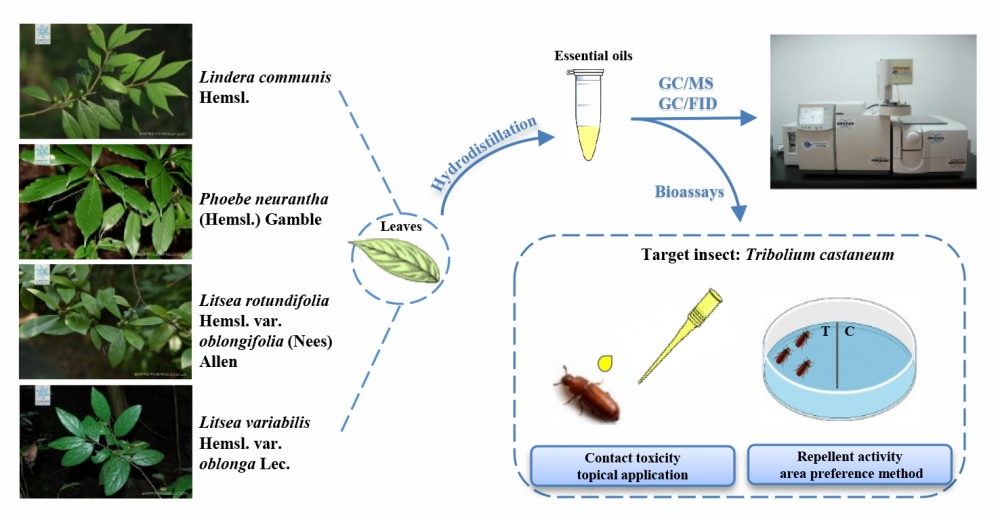JOURNAL 2905
Records of Natural Products
Year: 2024 Issue: 1 January-February
p.114 - 124
Viewed 1802 times.
GRAPHICAL ABSTRACT

ABSTRACT
Essential oils (EOs) from Lauraceae plants have been extensively investigated in the control of stored-product insects. In this work, four Lauraceae species namely Lindera communis Hemsl., Phoebe neurantha (Hemsl.) Gamble, Litsea rotundifolia Hemsl. var. oblongifolia (Nees) Allen and Litsea variabilis Hemsl. var. oblonga Lec. were collected for extracting EOs by hydro-distillation and their chemical compositions were comparatively analyzed by GC/MS and GC/FID. Furthermore, contact toxicity and repellency of these EOs were evaluated against Tribolium castaneum Herbst, a universal model insect used in fundamental and applied research. Results indicated that EOs from Lin. communis, P. neurantha, Lit. rotundifolia and Lit. variabilis were mainly composed of sesquiterpenoids including (E)-β-famesene, cis-α-bisabolene, α-selinene, eremophilene, β-selinene, etc. In bioassays, all the EOs at maximum testing concentration of 78.63 nL/cm2 were significantly repellent to T. castaneum adults at 2 and 4 h post-exposure, which were comparable to the positive control DEET. Among them, EOs from P. neurantha, Lit. rotundifolia, Lin. communis P and Q also had contact toxicity with LD50 values of 14.52, 17.58, 23.82 and 86.63 µg/adult respectively. It suggests that the four species of Lauraceae have promising potential to be developed into botanical repellents and contact toxicants against stored-product insects.
KEYWORDS- Lindera communis
- Phoebe neurantha
- Litsea rotundifolia var. oblongifolia
- Litsea variabilis var. oblonga
- Biopesticides
- Stored-product insects